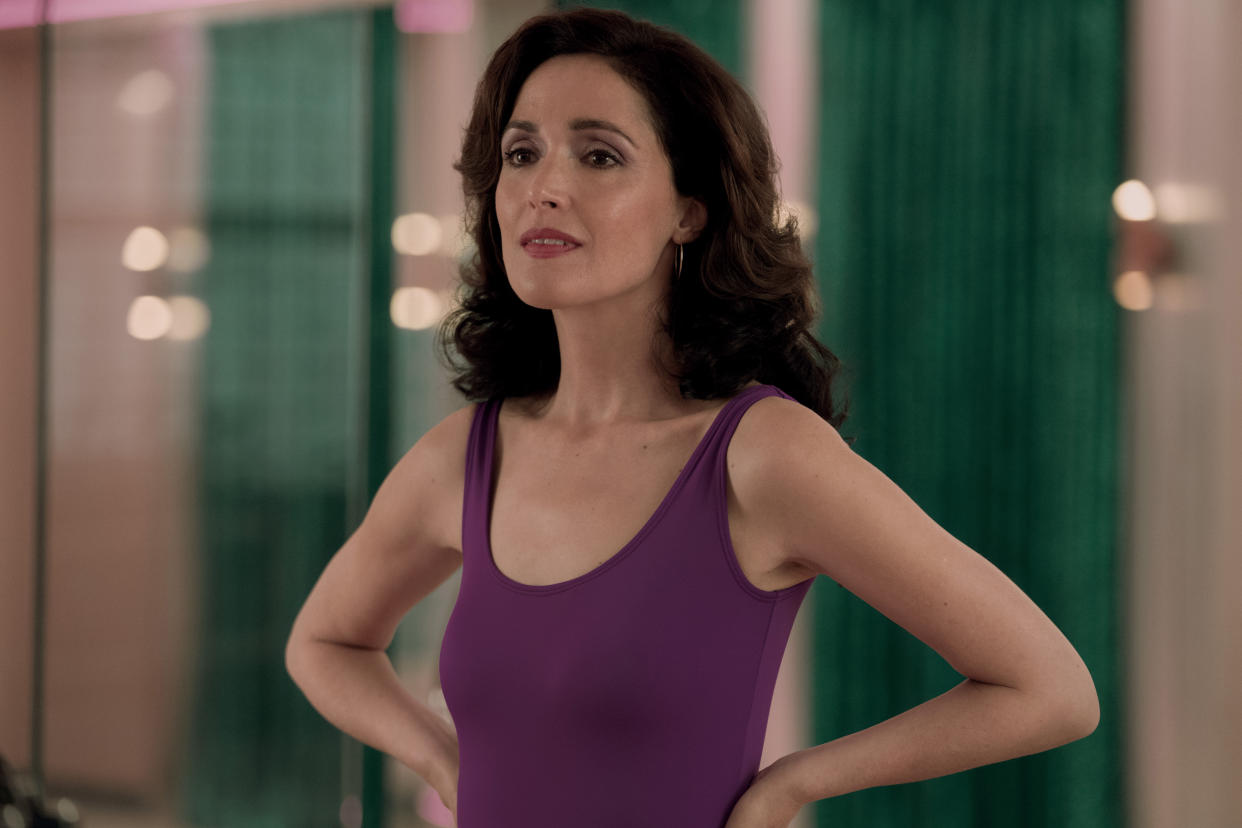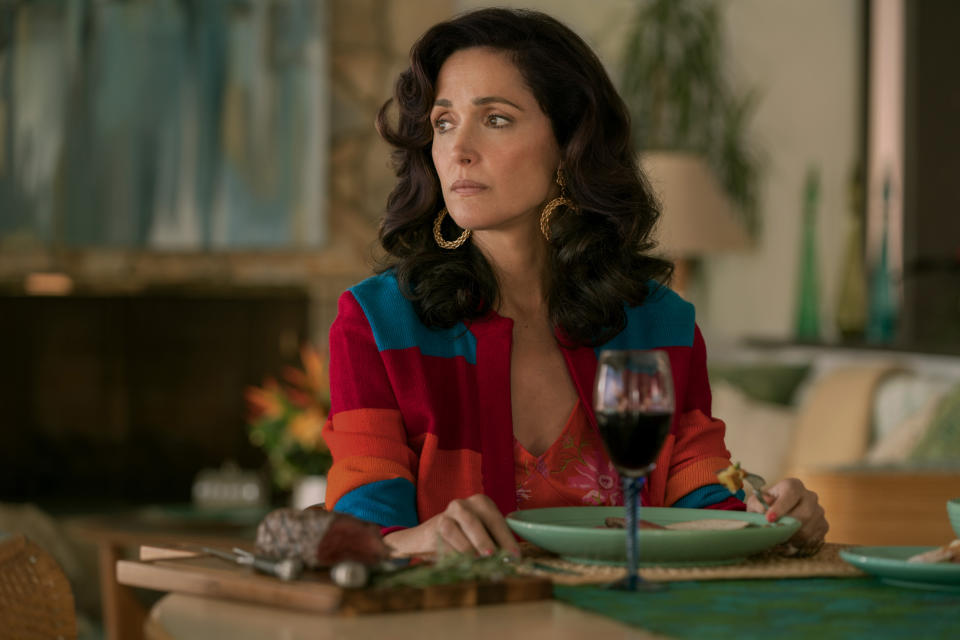‘Physical’ Showrunner Annie Weisman on That Devastating Dinner Scene Twist in the Series Finale

After three seasons and 30 episodes, Sheila Rubin (Rose Byrne) finally got a happy ending on “Physical.” Except in keeping with Annie Weisman’s Apple TV+ series, that ending may not be what audiences expect. Warning: Spoilers ahead.
In fact, Weisman told IndieWire’s Filmmaker Toolkit podcast that the ending might be more redemptive than happy. “She gets what she wants, but in order to do it, she’s alone,” Weisman said. “I did not believe that she could get what she wants and also be partnered. It’s just not true to her story. But she’s liberated, she’s free, no one’s tying her down. No one’s forcing her to be anyone she’s not. And she has a huge amount to give and she has community through her work, and she has figured out and cracked female friendship in a real way. She has real intimacy, emotional intimacy with friends, but she does not have a partner.”
More from IndieWire
The series finale (which premiered September 27) finds Sheila deep in the 1980s and finally a successful fitness guru and lifestyle expert. (In 2023, she’d absolutely crush it on Instagram and TikTok.) But in true “Physical” fashion, first we’re treated to a little bit of sleight of hand when Sheila arrives at her beautiful oceanfront home to dinner with… her married, off-again, on-again Mormon lover John Beem (Paul Sparks.) As she unwinds over a steak and a glass of wine, he encourages her to talk about her day and her work — until she goes outside to investigate a noise and, on her return, we realize that the entire sequence was another manifestation of Sheila’s inner voice.
Listen to the full wide-ranging conversation about the entire “Physical” series below.
The audience has already been slightly destabilized by the jump forward in time, and the sudden appearance of John is cause for both confusion (they already had a pretty serious farewell when he moved to Mexico) and excitement (can these two crazy kids actually make it work?!). But as the scene progresses, a feeling of unease settles over what should be a bucolic scene. He even cuts her steak for her, a moment that Weisman was particularly fond of.
“We don’t do a lot of slow moves on ‘Physical,'” said director Stephanie Laing, who helmed 24 episodes over the course of its run, including the finale. “The camera is very active and perhaps if it wasn’t, it might be a very heavy show. Because the camera represents what’s internally in [Sheila’s] mind, right? And in that particular scene, [the camera] is moving probably slower than we’ve ever moved it.” The effect is arrestingly soothing until the realization starts to sink in that “Physical” has never been a particularly soothing show, so why now?

“I hope that it feels satisfying,” Weisman said of the reveal, which comes on the heels of learning about Sheila’s enormous success. “It’s satisfying to me in the sense that at least her fantasy is no longer a very painful and destructive one. That at least her fantasy is one where she’s able to kind of indulge in something that feels positive and not destructive.”
Ah yes, that destructive inner voice that so many of us have. When “Physical” premiered in 2021, a lot of people weren’t expecting anything more than a seriocomic look at the fitness crazy of the ’80s, with Byrne in comedic mode as a Jane Fonda manqué. Weisman’s sly goal, however, was to use those trappings to tell a dark, moving story about eating disorders, body dysmorphia, toxic relationships, female ambition, and female friendship. Her plan was clear by the end of the first season, but many initial reviews missed the point.
“There was a sense of, ‘How dare you? We thought it was one thing and it’s something else.’ Would be my take on it a little bit,” Weisman said when the topic of those initial reviews is broached. “In a way, the response was sort of enacting what we were reflecting about the culture…. I would definitely characterize some responses to Sheila as having some sexism to them. And you know, I would sort of hesitate to make that claim [at the time] ’cause it sounds defensive as a writer. But I’ve been emboldened by some of the writers recently who’ve just kind of come out and called responses what they really are. And I feel like, you know what? I’m ready to say that too. I think some of the responses [were a] little sexist, a little, ‘You’re such a beautiful woman. How dare you be sad? How dare you be mean?'”
Luckily the series garnered what Weisman called a “groundswell of support” that allowed her three seasons to tell Sheila’s story, one which resonated with viewers who are not accustomed to seeing their private demons so skillfully dissected and, in many ways, defanged. “Physical” made viewers — women and men — feel seen.
Nowhere more, perhaps, than in the middle of Season 3 when Sheila has a setback in her recovery that includes appearing in just her underwear in front of a crowd of strangers. The moment is unnerving in both its comedic horror and in how well we know Sheila and can anticipate her reaction, and for Weisman, it was crucial that a relapse occur at that point.
“What if your worst fear is realized?” Weisman said “You know what? If you really are exposed and then you realize you live through it, and then it’s like a rebuilding process from there. In a way, it’s the best thing that could have happened: Just get fully exposed and there you are, you’ve survived it.”
All three seasons of “Physical” are streaming on Apple TV+.
The Filmmaker Toolkit podcast is available on Apple Podcasts, Spotify, Overcast, and Stitcher. The music used in this podcast is from the “Marina Abramovic: The Artist Is Present” score, courtesy of composer Nathan Halpern.
Best of IndieWire
Where to Watch This Week's New Movies, from 'The Creator' to 'Fair Play'
The Best Thrillers Streaming on Netflix in October, from 'Fair Play' to 'Emily the Criminal'
Sign up for Indiewire's Newsletter. For the latest news, follow us on Facebook, Twitter, and Instagram.

 Yahoo News
Yahoo News 
